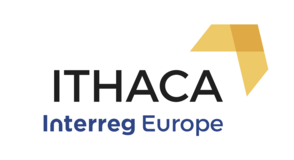Limoges and Bordeaux formed the background of the 7th 'Exchange of Experience and Peer Evaluation' event (EEPE) from the 27th to the 29th of November.
ITHACA's 7th EEPE was organised in Nouvelle-Aquitaine, which is the largest region in France. The region has 6 million citizens, and was established in January 2016 as a merger of three regions: Aquitaine, Limousin and Poitou-Charentes. Despite being a new establishment and having a large and diverse territory of mountains, forest, ocean, vast agricultural areas and several big cities, it has a strong political focus on silver economy and active healthy ageing at all governmental levels.
Nouvelle-Aquitaine left an impression of a strong culture of cooperation and agreement from the national to the municipal level on the urgency to transform and inform the opportunities and conditions for its elderly citizens.
This article highlights some key points of the delegates from the eight other regions presented at the EEPE evaluation session in Nouvelle-Aquitaine:
On health care policy
An impressive 10 percent of the region's budget is allocated to innovation initiatives, of which one fifth goes to social innovation.
There is a comprehensive policy framework supporting, among others, economic, social and health development and innovation. The framework includes the National Health Strategy. However, it was not fully clear how this strategy is reflected in regional policy and practices and to what extent the various policy and strategy elements are aligned and mutually integrated.
There is a strong focus on the silver economy and healthy ageing at all governmental levels. It was impressive to see a strong culture for cooperation from the national over regional to municipal levels on efforts to investigate and pursue opportunities to address challenges related to the ageing of the population. However, it appears to be too early to judge what will be the impact of this in policy terms and on the health and care of the elderly less than three years after the formation of the new regions.
Nice crossovers between sectors were demonstrated to the delegates such as the Post Organisations (La Poste) undertaking social innovation and the project "Carers' Rally for Home Workers" addressing labour market issues related to health care.
On ecosystems and cooperation across the health and care sector
The delegates found that the region has a very well developed ecosystem with a broad participation of many different types of committed stakeholders such as government, academia and industry. The level of presence of civil society representatives (citizens, patients and their representative organisations) seemed somewhat limited.
It was acknowledged that the ecosystem encompasses a remarkable number of support organisations like the innovation agency ADI, living labs - including Autonom'lab and Calyxis, technology centres and parks, business incubators etc. that bring stakeholders together and assist them in various functions.
Given the recent merger of the three regions into one, it would appear, however, that there is scope for developing a clearer division of labour and specialisation among these with the benefit of creating more value across the different fields and needs for innovation. Some would seem best suited to follow customer centric approaches, while others could cater to the needs of the larger businesses. It could be a point of attention to create a common understanding and languages between the different systems in order to break down silos of institutional interests.
Getting inspiration from innovations and learning developed in other regions and European countries was suggested as a means to maximise effectiveness of innovation initiatives.
Implementation across innovation cycle
A number of innovation projects were presented to the delegates, especially related to social innovation related to the silver economy. Many of them have had a clear customer centric approach with multidisciplinary teams involved. This has been paramount to what has been done in this field. The number of prototypes developed is notable.
The region has shown a willingness to share knowledge and experience from these projects, both internally within the region and outside.
The delegates observed that there did not seem to be much evidence of completion of the innovation cycle for many innovation initiatives - and thus limited scaling-up, i.e. challenges in getting the solutions to the market and acquired by potential users. It was unclear how this would be accomplished in the future and consequently what would be the impact of the innovative solutions eventually.
Notwithstanding this, a potential for more involvement of the citizens seemed to exist, not so much in the form of people to be helped - but rather that these become agents of change in the cocreation process.











